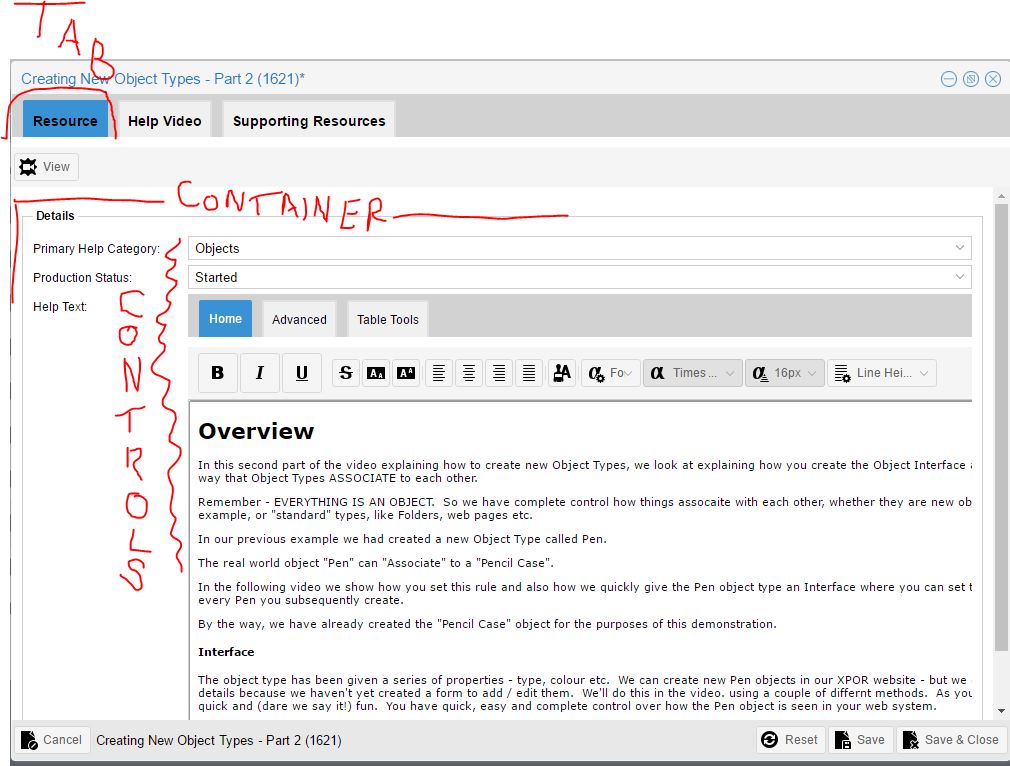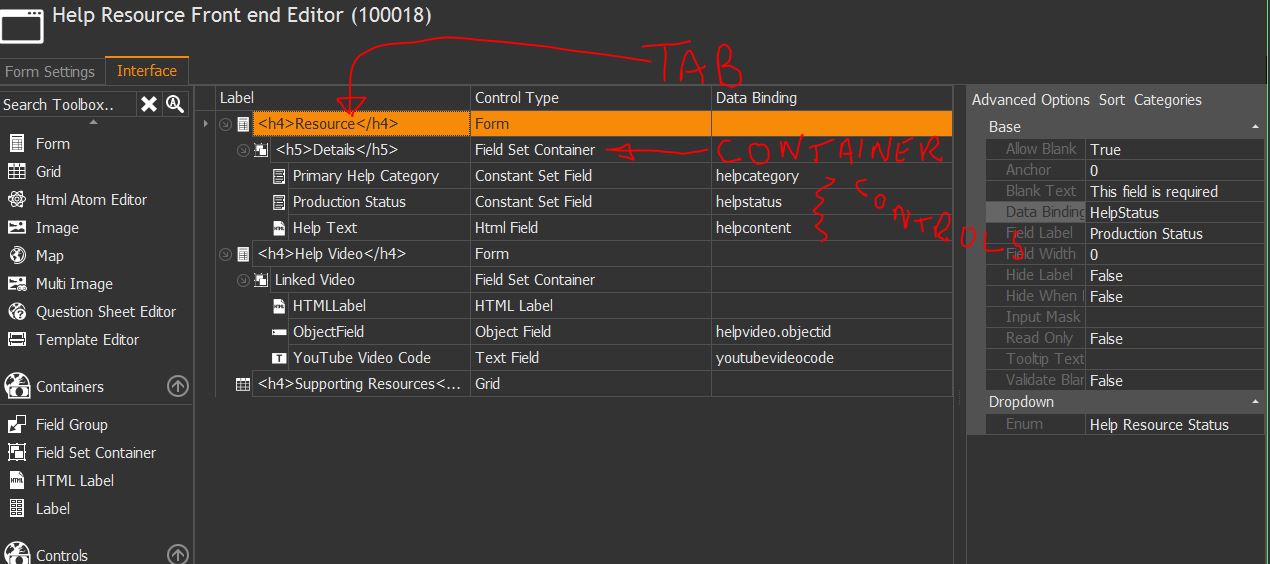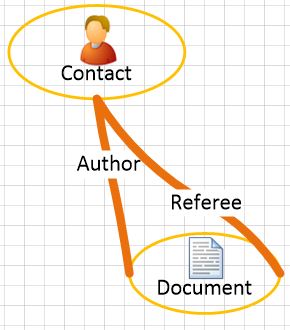Help Resources
Creating New Object Types - Part 2
In this second part of the video explaining how to create new Object Types, we look at explaining how you create the Object Interface and how you set the way that Object Types ASSOCIATE to each other.
Remember - EVERYTHING IS AN OBJECT. So we have complete control over how everything in XPOR associates to the others, whether they are new object types like our Pen example, or "standard" types, like Folders, Web Pages etc.
In our previous example we had created a new Object Type called Pen.
The real world object "Pen" can "Associate" to a "Pencil Case".
In the following video we show how you set this rule and also how we quickly give the Pen object type an Interface where you can set the details of each and every Pen you subsequently create / add to your web system.
Interface
The object type has been given a series of properties - type, colour etc. We can create new Pen objects in our XPOR website - but we can't yet add these details to each Pen because we haven't yet created a form to add / edit them. We'll do this in the video, using a couple of different methods.
As you will see the process is quick and (dare we say it!) fun. You have quick, easy and complete control over how the Pen object is seen in your web system.
The form we are creating is the basic object editor form for our Pen. You can make as many different object editor forms for the pen object as you may need. The process is very similar to what you are about to see.
There are a large number of different types of controls on the menu, for you to add to your editor forms. Each is covered by its' own help file. If you don't see a control in the menu that fills your needs, we'll be very surprised. There is a lot of choice.
The general process of building an Object Editor form is;
- Add a Tab Type - such as a Form or Grid or Calendar or ....
- Inside the Tab, add a "Container" - such as a Field set Container (a simple encapsulating box).
- Inside the Container, add the Controls - such as Text Boxes, Drop Downs, Object pickers etc.
Object Modeller view of the same form
Associations
Associations are a positive move away from FOLDER structures. Ever since the uptake of DOS and computer systems in general, IT has forced us to stick our objects into files, groups or folders so we can comprehend their relevance!
For example, the reason you know that a person is an Author of a Document is because they are in a folder or group called "Authors".
IT systems, like DOS and Windows, force you into working this way. As an IT trainer some 25 years ago, it was clear to me that I was forcing people to think like this - it is not a natural, intuitive way of working. But there is now a better way.
For example, you recognise the person as the Author of the Document because you know this is their relationship (Association) to the Document.
Xpor let's you easily build a model that shows how things associate to each other - not filed in boxes named "Sales People", or "Author" or "Referee" etc..
In this video we see how an association is made between to two object types - a simple Parent / Child association between two new object types. We then use this new association type to connect two new objects that we make in the website admin system.
Parent / Child Associations type
Our video example of associating two new object types together used the system standard "Parent / Child" association type. This mimics a simple folder structure, effectively, things can be inside things. A bit like documents can be inside folders. The difference with XPOR is that this demonstration shows a Pen being made inside a Pencil Case. In another video, we show how you can make any kind of association type - such as an Organisation associated to its' Boss.
The Parent Child association is important, however. It is the one association that an object must have, to exist somewhere. Objects that don't have Parents are effectively Deleted, viewable only inside the recycle bin!



